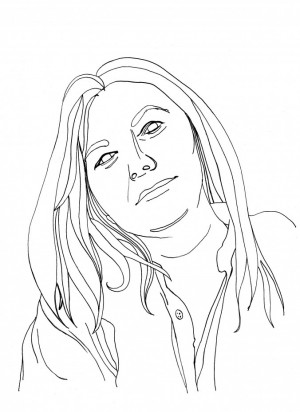To the editors:
I recently viewed a video feature on the F Newsmagazine website about a Garfield Park alternative gallery space called New Capital. The gallery organizers spoke a lot about how they built New Capital out of nothing, using an abandoned building they walked through trash and vacant lots to find. They also talked about the entire neighborhood as being forgotten coordinates on a map. Well, all this talk didn’t sit so well in my stomach.
Since the birth of the apartment gallery/alternative space movement, artist-run spaces have become a thriving element in the art world. They produce many opportunities for socializing and exhibiting and provide advantages to artists and the communities of friends and supporters that populate the Friday night “gallery” hops — predominantly young and upcoming artists. However, in addition to the activity inside these spaces, the location they inhabit produces a different series of consequences and politics.
Traditionally, artist-run spaces are located in “up and coming” neighborhoods or ones that don’t seem to be on the rise economically. For the artists, these neighborhoods present the opportunity for inexpensive space that can be flipped from old lofts, apartments, and abandoned buildings into hip spaces for displaying art. But what do these flipped spaces newly inhabited by predominantly white middle-upper class artists do to the neighborhood?
The move from ivory tower institutions to alternative spaces can be seen by some artists as a more effective way to interact and include the community at large. The New Capital representative told F Newsmagazine: “It’s a tragedy that there are corners of the city that are forgotten. Also, nobody’s watching. … One prevalent part of our culture is watching. You’re always scanning your bar code — you’re always under surveillance and when you get to this block — you’re off the grid.”
What exactly is forgotten — and by whom? Residents of the neighborhood are not forgetting Garfield Park — it’s theirs. Are artists who are moving into these neighborhoods claiming it as a turn to social responsibility to bring activity into spaces that they perceive as dead, forgotten, or uncultured? Against whose standards do we make these judgments about space and culture?
Theaster Gates is a Chicago-based artist who is trained as an urban planner. His Dorchester Project was founded in 2009 and in a similar way as New Capital. He acquired an abandoned building on the South Side of Chicago. However, Gates had very different goals for what the building would do and how it would come together. Gates envisioned the building as an artistic meeting ground where he could invite people to gather, share ideas, eat and have good conversations as well as share art and performances. The house was remodeled by carpenters, artists and volunteers from within the neighborhood using local materials, such as wooden floors coming from a west side bowling alley. It houses archives such as the University of Chicago’s lanternslide archive — a collection of 6,000 images — 14,000 used books from a bookstore that went out of business and records from a local record shop that closed.
Theaster Gates, while not building a traditional museum or gallery, is building a cultural space with goals of resourcing a community. He has commented, “My neighborhood, like any other neighborhood that has been under-resourced for a long time, has had its fits and starts of development. There have always been dedicated people in my neighborhood, folks who keep their lawns and take out their garbage and say hi to each other. It just happens to lack certain cultural amenities that would make it desirable to other people.”
Gates is concerned not only with the ways in which cheap real estate can advantage him as an artist, but the ways in which his artistry can advantage the communities from which these properties will materialize.
In an interview with Christina Linden, Gates posed a poignant question: “Is it possible to create a model for reinvestment that’s not a model for gentrification? Create a cultural moment without it becoming an alter universe of whiteness and wealth in the kids who just graduated from art school and every do-gooder around the country? Could it be that this neighborhood is reactivated by people who already live here — and more of what they do best is seen instead of more of what they do worst?”
What irked me most about the video feature was not that New Capital exists in Garfield Park (they’re not the only gallery that does); rather that they are championing the idea that by entering a space as an outsider, by their existence alone, these artists are improving the community, or in their own words: “Putting it back on the cultural grid.”
FNewsmagazine, is it possible for young artists like us, graduating from the ivory tower of white cultural institutions to find ways to exhibit our work, and the work of other young artists, without promoting gentrification? To reiterate Theaster’s quote, as young artists living in a city with a rich history of apartment and alternative space galleries, are we looking at lower income neighborhoods as having deficits (forgotten), that should be filled by whiteness? Are we giving credit to the culture that exists within these spaces and its ownership by those living there, not by us?
There is no easy answer or solution to the problems of gentrification. But, it is important for us to be aware of our responsibility in it and to question the “social responsibility” pat on the back we may be giving ourselves. Theaster Gates acts as a brilliant example of an artist who not only exists within the space, but engages with it and provides opportunities for the community to empower themselves.
— Gabriella Brown
Here is the video Gabriella Brown is referring to. Please let us know what you think:
DIY Chi: New Capital from F Newsmagazine on Vimeo.






